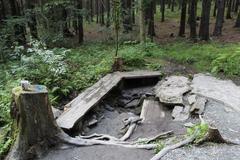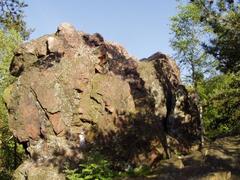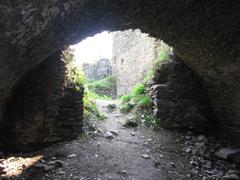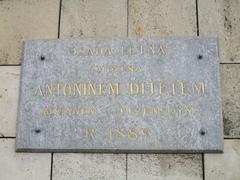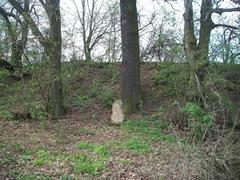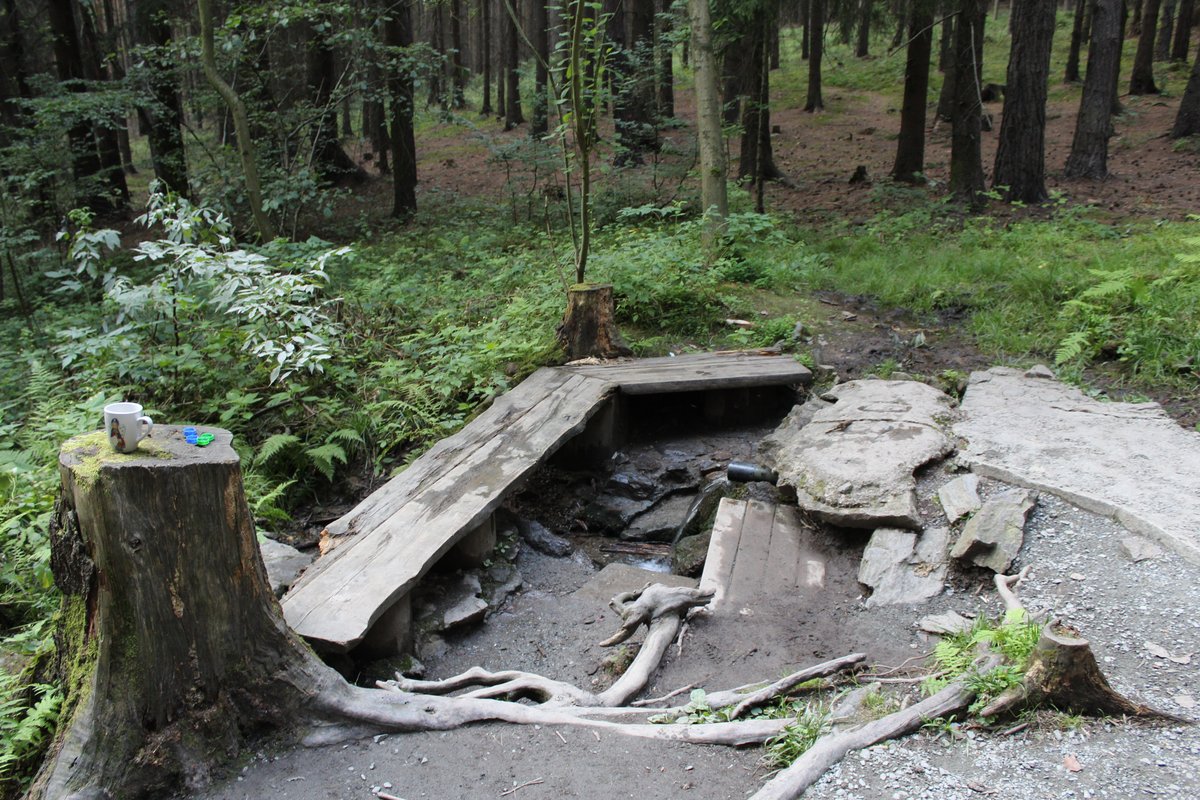
Visiting Hours and Tickets for Kokotská studánka in Plzeň
Date: 01/08/2024
Introduction
Kokotská studánka, nestled in the scenic Kokotský les near Plzeň, Czech Republic, is a hidden gem offering a blend of historical significance, cultural charm, and natural beauty (Greenmind). This natural spring, known for its pristine water quality, draws visitors with its serene landscape and rich history. The name ‘Kokotská’ harks back to the medieval village of Kokot, first recorded in the 14th century. While the village has long since disappeared, the springs, especially Kokotská studánka, remain an important part of the local landscape, contributing to the area’s biodiversity and cultural heritage. The Kokotský les, with its picturesque trails and educational stops, attracts hikers, nature enthusiasts, and history buffs alike, offering a unique glimpse into the region’s past and present (iDNES). This guide provides comprehensive visitor information, ensuring that your trip to Kokotská studánka is both enjoyable and memorable.
Table of Contents
History and Significance of Kokotská studánka
Historical Background
Kokotská studánka, located in the picturesque Kokotský les near Plzeň, Czech Republic, is a natural spring with a rich historical background. The name ‘Kokotská’ is derived from the medieval village of Kokot, which once existed in this area. The village’s name, although humorous to modern ears, is rooted in historical context and has been preserved through various landmarks, including the spring itself. The medieval village of Kokot was first mentioned in historical records in the 14th century. It was a small settlement that thrived due to its strategic location and the abundance of natural resources, including fresh water from the numerous springs in the area. Over time, the village declined, but the natural springs, including Kokotská studánka, remained a vital part of the local landscape.
Cultural Significance
Kokotská studánka holds significant cultural value for the local community and visitors alike. The spring is part of the Kokotský les, a forest known for its scenic beauty and rich biodiversity. The forest and its springs, including Kokotská studánka, are integral to local folklore and traditions. The water from the spring is considered pure and is often used by locals for drinking and other purposes. The name ‘Kokotská’ itself has become a point of cultural interest. While it may elicit a chuckle due to its phonetic similarity to a slang term in modern Czech, it is a reminder of the area’s historical roots. The playful nature of the name adds to the charm of the location, making it a memorable spot for visitors.
Environmental Importance
Kokotská studánka is not just a cultural landmark but also an important environmental feature. The spring contributes to the local ecosystem by providing a reliable source of fresh water. This is crucial for the flora and fauna of Kokotský les, which includes a variety of plant species and wildlife. The presence of the spring supports the biodiversity of the forest, making it a vital ecological asset. The water from Kokotská studánka is known for its clarity and purity. It is often compared to rainwater in terms of quality, and visitors are encouraged to taste the water directly from the spring. This natural resource is a testament to the pristine condition of the local environment and the efforts to preserve it.
Visitor Experience
Practical Information for Visitors
- Trail Access: The Kokotské rybníky trail is well-marked and begins in the village of Nová Huť. It is advisable to start early in the day to allow ample time for exploration and rest stops along the way.
- Footwear and Clothing: Comfortable hiking shoes and weather-appropriate clothing are recommended. The trail is relatively easy, but proper footwear will ensure a comfortable hike.
- Water and Snacks: While the spring water is safe to drink, it is a good idea to carry some water and snacks for the hike. There are no commercial facilities along the trail, so be prepared.
- Respect Nature: As with any natural site, it is important to respect the environment. Carry out any trash and avoid disturbing the wildlife. The area is protected, and visitors are encouraged to help preserve its natural beauty.
- Maps and Guides: A map of the trail can be found here. It is useful to have a map or a guidebook to navigate the trail and learn about the various points of interest.
Nearby Attractions and Travel Tips
While visiting Kokotská studánka, consider exploring other attractions in the Plzeň region:
- Plzeň Historical Sites: The city of Plzeň is rich in history and offers several sites worth visiting, including St. Bartholomew’s Cathedral, the Great Synagogue, and the Plzeň Historical Underground.
- Hiking Trails: The Plzeň region is home to numerous hiking trails that offer stunning views and diverse landscapes. The Bohemian Forest and Brdy Mountains are popular destinations for nature lovers.
- Local Cuisine: Don’t miss the opportunity to try local Czech cuisine. Plzeň is famous for its beer, and a visit to the Pilsner Urquell Brewery is highly recommended.
FAQ
-
Is Kokotská studánka accessible year-round?
Yes, Kokotská studánka is accessible year-round. However, the best time to visit is during the warmer months when trail conditions are optimal. -
Are there guided tours available at Kokotská studánka?
There are no official guided tours, but local hiking groups occasionally organize trips to the area. Check with local tourism offices for more information.
Conclusion
Kokotská studánka is a hidden gem in the Kokotský les, offering a blend of historical significance, cultural charm, and natural beauty. Whether you are a history enthusiast, a nature lover, or simply looking for a peaceful retreat, a visit to this spring and its surrounding forest is sure to be a rewarding experience. For the latest updates and more travel inspiration, download the Audiala mobile app or follow us on social media.
References
- Greenmind, 2023, Kokotské rybníky a pramen Čůráček
- Wikipedia, 2023, Kokotská studánka
- iDNES, 2023, Výlet na Čůráček a Kokotsko
- IDOS, 2023, IDOS
